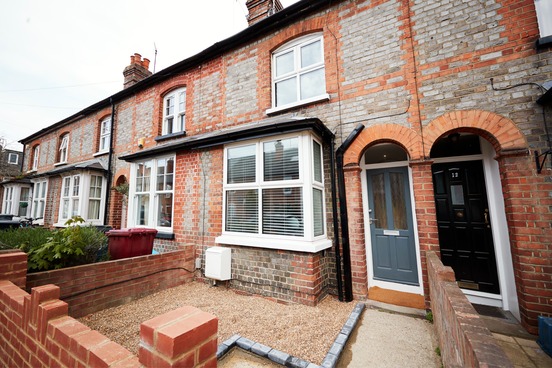
Void periods are a source of frustration for most landlords. Not only do they mean lost income, but they can also lead to additional costs and hassle when it comes to finding new tenants.
Houses in multiple occupation (HMOs) are generally profitable investments, often generating higher rental yields than your average buy-to-let. However, the most profitable HMO investments are those that experience high demand and minimal void periods.
HMOs that experience regular or extended vacancies can quickly turn from a profitable investment into a significant financial liability.
This article will explore what causes void periods in HMOs and how landlords can minimise them.
The Cost of Void Periods in a Rental Property
A void period is the time during which a room in your rental property stands empty between one tenancy ending and the next beginning. According to the Letting Agent Today website, the average void period for landlords across England is 16.8 days a year.
Void periods can be expensive for HMO landlords, particularly if more than one room in the property is empty at the same time.
One benefit of managing an HMO property over a standard buy-to-let is that it is rare for all the rooms in your property to be empty at once. Landlords who let out the whole of their property to one family risk losing all the rental income for that property during void periods. In contrast, HMO landlords will usually only lose a small portion of their rental income if just one of their tenants leaves.
Landlords relying on rental income to cover mortgage repayments must foot the bill themselves during void periods. Then there’s also the cost of utility bills and council tax to consider. The expenses can add up quickly, particularly if there are multiple rooms void at the same time.
The cost of void periods for HMO landlords depends on several factors, including the average rent and the average length of void periods in the area.
Whilst it’s wise to do everything you can to avoid void periods, having a plan for when you inevitably experience one is equally important.
What Causes Void Periods in HMOs?

Before we begin explaining the steps that landlords can take to avoid HMO void periods, we need to understand what causes the problem in the first place.
Student landlords may face regular void periods over the summer months, sometimes tenants leave unexpectedly due to unforeseen circumstances, and poor market conditions can also have a negative impact on HMO rentals.
Whilst some voids are unavoidable, others are caused by more deeply rooted problems. Some landlords experience chronic low occupancy rates caused by various factors, including undesirable location, poor advertising, poor property management or maintenance, and incorrect pricing. Fortunately, once you’ve identified what is causing your HMO’s low occupancy rate, most of the problems listed above can be rectified to improve the rental property’s profitability.
How to Avoid HMO Void Periods
The key to minimising void periods in your HMO is to generate high demand for your property and retain your tenants for as long as possible.
This section will discuss some key strategies and tips to help HMO landlords minimise the risk of unexpected void periods. From effective marketing strategies to good property maintenance, we’ll cover everything you need to know to keep your HMO fully occupied and generating rental income.
Invest in the Right Property to Avoid Void Periods
Finding the right property is the foundation for any successful HMO investment. If your property is in an undesirable location, you could be fighting an uphill battle and experiencing chronic low occupancy rates. Before investing in a property, you should thoroughly research your target market and the local area. Always aim to buy in a desirable location with high-demand rooms to rent in HMOs to help minimise void periods from the get-go.
Maintain the Property to Encourage Tenants to Stay
This one should go without saying, but if you want to attract good tenants, retain them, and charge competitive rental prices, you need to provide tenants with a well-maintained living environment and good landlord service.
Attracting and retaining tenants will be difficult if your HMO is shabby, dirty, damp, mouldy, or dated. Keeping up with property repairs and maintenance and generally providing an excellent service to your tenants will benefit your reputation as a landlord, increase tenant retention rates, and make tenants more likely to recommend your property to people they know.
Make Your HMO Stand Out
Keeping your HMO clean and well-maintained is the bare minimum that tenants expect. If you want your property to stand out and effortlessly attract new tenants, you may need to go the extra mile. The most in-demand HMOs often have something a little edgy about them that sets them apart from their competitors. Landlords should consider their target market and what they can do to make their HMO appeal to this demographic and stand out from competing properties in the area.
Start by boosting the property’s kerb appeal. Simple updates like planting flowers or repainting the front door can make the property look more homely and cared for. Then move onto your property’s interior. Consider tailoring the interior design to appeal to your target market. For example, young professionals may appreciate a communal workspace. Finally, include a couple of unexpected extras to sweeten the deal. Think smart technology or an outdoor seating area.
Creating an HMO that appeals to your target audience can help to attract long-term tenants and reduce the likelihood of void periods.
Find the Right Tenants to Avoid High Tenant Turnover

Even if you’re experiencing low occupancy rates, it’s important not to rush into signing a tenancy agreement without thoroughly vetting potential tenants.
By carrying out background and credit checks, verifying employment and income, and checking references from previous landlords, landlords can significantly reduce the risk of void periods caused by tenants who fail to pay rent or move out unexpectedly.
Avoid mixing tenant types at all costs, as people with different lifestyles can cause problematic living incompatibilities. If you are running a student HMO, stick to students only. Don’t add a student to the mix if you let your HMO to young professionals.
Being clear and transparent with all potential tenants about your expectations and requirements, including the lease terms, rent payment schedules, and house rules, can help find more reliable tenants who are less likely to up and leave unexpectedly.
Have a Marketing Strategy for Your HMO Property
If you’re struggling to keep your HMO full, consider whether you are making it easy for your target audience to discover it.
Keeping your HMO in full occupancy requires more work than posting an advert on one rental website and then putting your feet up. HMO landlords should have a comprehensive marketing strategy to help them reach their target audience and highlight the benefits of their property.
This could include advertising your property on multiple platforms, including popular rental websites and social media. Knowing where your target audience hangs out online can maximise your visibility and attract a steady stream of potential tenants.
Don’t forget to use professional and attractive photos that showcase your property’s best features and offer virtual video tours to provide potential tenants with an immersive experience if they cannot view the property in person.
Landlords shouldn’t neglect to include social media when marketing their HMOs either. Social media can be a powerful tool for generating a buzz around your property and leveraging word-of-mouth referrals from satisfied tenants.
If your HMO is experiencing low occupancy rates and void periods, consider offering incentives such as a move-in special or referral bonus to encourage tenants to sign a lease and spread the word about your property.
Have a Strategy to Retain HMO Tenants
One of the best ways to avoid having empty rooms in your HMO let is to keep hold of your tenants!
High tenant turnover can lead to regular and extended periods of vacancy, which can significantly impact the profitability of your investment.
To retain your tenants, you need to provide a high-quality living experience that meets their needs and expectations. This includes maintaining the property to a high standard, maintaining good communication, providing a service with a smile, and responding promptly to any queries, concerns or issues.
As well as providing a first-class rental experience to your tenants, you could also consider offering incentives such as rental discounts or flexible lease terms when a tenant’s lease is close to ending, to encourage them to renew or stay on longer.
As well as saving you the expense of void periods, keeping your tenants happy and retaining them also saves you the hassle and cost associated with advertising the property and screening new tenants.
Offer Competitive Prices for Your HMO Rental Property
Overpricing rooms in your HMO is a sure-fire way to put off potential tenants. However, under-pricing rooms in your HMO can be equally as off-putting as potential tenants may perceive the price to reflect the quality of living they’ll receive.
To determine a fair and competitive rental price, landlords should conduct thorough research of comparable HMOs in the area, considering factors such as property size, location, and quality of finish. Offering a competitive price for your property can increase demand and significantly reduce void periods.
Use 12-month Agreements for Student Lets
The summer months can be an unstable period for student landlords. If not carefully managed, student landlords risk losing rental income for two months every year when students return home for the summer break. Some insist on a 12-month lease, whilst others offer an 11-month lease. Another approach that some student landlords take is to minimise their losses by offering a discounted rate over the summer months.
Budgeting for HMO Void Periods
As we’ve seen, HMO landlords can take plenty of steps to increase demand and minimise the time rooms in their HMO stand empty. However, they should also accept that the occasional void is inevitable in HMO property management.
By budgeting for these void periods, HMO landlords can mitigate their financial impact. Landlords should build void periods into their budget by keeping money in a reserve fund to cover expenses during extended vacancy periods.
HMO landlords should also check their landlord insurance policy to ensure it covers loss of rent due to void periods or other unforeseen circumstances.
What to do When a Room Becomes Void?
It is inevitable that from time to time, a tenant will leave your HMO let before you have had time to find a new tenant.
When this happens, it’s important to act quickly but cautiously, to minimise the time the room is void and not generating income.
Act Quickly to Find a New Tenant
As soon as you know that one of your tenants is leaving, you should advertise the room to find a new tenant. Ideally, you want someone lined up and ready to move in as soon as your current tenant moves out.
Whilst time is of the essence, don’t be tempted to take shortcuts regarding tenant checks. Filling the room quickly is important, but you still want to find the right tenant. Otherwise, you could have to fill the room again shortly.
Ask Existing Tenants if they Know of Anyone to Fill the Room
Advertising and marketing the room to rent in your HMO can be a time-consuming and expensive job. If you have a good relationship with your existing tenants, asking them if they know anyone who wants to move into the room before you advertise it can be a good idea. If they do, this can save you time, hassle, and money and improve their happiness. You could even offer your tenant a finder’s fee or discount on rent as an incentive for them to help you fill the room.
Freshen the Room Up to Attract Tenants
Whilst the room is sitting empty, don’t miss out on the opportunity to spruce it up for the next tenant. It will be easier and faster to fill the room if it looks attractive and well-maintained.
Using the tips and strategies in this blog will help HMO landlords minimise costly void periods and improve tenant satisfaction and retention rates, to boost the overall success and profitability of their HMO.
Read our blog: 12 top tips for running a successful HMO, for further advice on maximising your HMO rental income.



